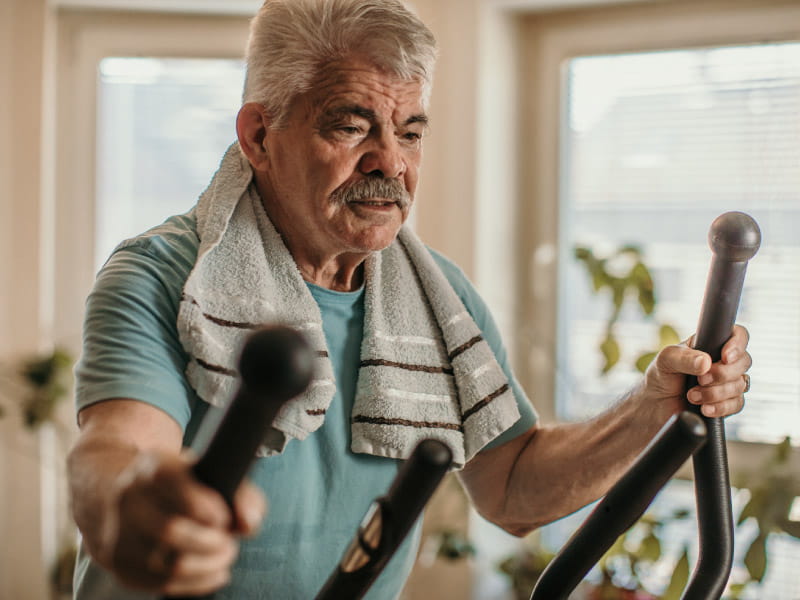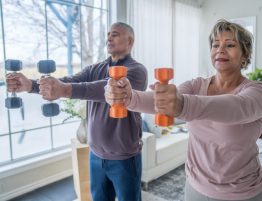
U.S. veterans who participate in home-based cardiac rehabilitation following a heart attack or heart procedure may have a lower risk of dying than their peers who refuse the treatment, new research suggests.
But more than half of those eligible don’t participate, according to the study, published Wednesday in the Journal of the American Heart Association. The results mirror national trends showing cardiac rehabilitation – usually provided at medical facilities – is severely underused.
“Whether in a hospital or home, cardiac rehabilitation is all about healthy behavior changes,” senior study author Dr. Mary A. Whooley said in a news release. Whooley is a primary care physician at the San Francisco Veterans Affairs Medical Center and professor of medicine at the University of California, San Francisco.
“However, changing behaviors is difficult, and while care facilities may offer on-site cardiac rehabilitation, many patients don’t choose to take advantage of follow-up treatment,” she said. “The biggest surprise of our analysis was how few patients chose to participate in cardiac rehabilitation.”
The American Heart Association and the American College of Cardiology recommend referral to cardiac rehabilitation programs for people who have had heart attacks, heart failure, coronary bypass surgery, heart valve surgery and other heart conditions. Cardiac rehabilitation focuses on behaviors including diet, physical exercise and stress management. Research has shown it helps lower mortality and hospital readmission rates.
But studies also show many people don’t use the programs. A study of Medicare beneficiaries published in 2020 found just 1 in 4 opted to participate in on-site, facility-based cardiac rehabilitation programs. According to the Million Hearts Cardiac Rehabilitation Collaborative, a joint project of the Centers for Disease Control and Prevention and the Centers for Medicare and Medicaid Services, increasing participation to 70% of cardiac patients following hospitalization could save 25,000 lives and prevent 180,000 additional hospitalizations each year.
The new study is the first to provide evidence that home-based cardiac rehabilitation also could improve survival rates, the authors said.
Researchers reviewed medical data for 1,120 veterans treated at the San Francisco VA Medical Center between August 2013 and December 2018 for heart attacks, angioplasty, coronary bypass grafting and other heart conditions. The veterans, mostly men with an average age of 68, were given the option of enrolling in a 12-week, home-based cardiac rehabilitation program following their hospitalizations. The program included up to nine coaching calls, motivational interviews, a workbook and personal health journal to document vital signs, exercise and diet.
The veterans also were offered a blood pressure monitor, a scale and a stationary bike. They worked one-on-one with a nurse or exercise physiologist. Follow-up calls were made to participants at three and six months. Participants were followed for an average 4.2 years.
Only 44% – 490 – of the veterans enrolled in the home-based program. A year after hospitalization, those who did not participate had double the death rate (4%), compared to those who did. Over the course of follow-up, death rates were about 36% lower for cardiac rehabilitation participants.
“We don’t know why so many patients opted out of rehabilitation,” Whooley said. “Even when home-based cardiac rehabilitation was offered at the time and place of their choosing, many patients were simply not interested in changing their behaviors.”
The researchers believe home-based care has greater potential than facility-based services in helping people make long-term behavior changes, because integrating healthy behaviors into a person’s home routine has been shown to increase adherence to those behaviors.
“As technology expands, behavior modification in a participants’ own home environment may help make cardiac rehabilitation more accessible and lifestyle changes more sustainable,” Whooley said.
Home care could also have shorter wait times than facility-based care programs, which can have limited availability, she said. But cost could be an obstacle.
“Our biggest challenge in the U.S. is that home-based cardiac rehabilitation is not covered by many health insurers,” she said. “Currently, Medicare only pays for on-site or facility-based cardiac rehabilitation.”
The study’s participants were nearly all English-speaking, older men, and researchers said it’s unclear if women or non-English-speaking people would see similar survival benefits of home-based cardiac rehabilitation.
Dr. Randal J. Thomas, chair of the 2019 joint AHA/ACC statement, called the study a “unique, landmark report.” Thomas is a professor of medicine in the Mayo Clinic Alix School of Medicine working with the medical center’s cardiac rehabilitation program in Rochester, Minnesota.
“Even though the study did not clarify if home-based cardiac rehabilitation impacts death rates as well or even better than center-based rehabilitation,” Thomas said, “it does show that home-based cardiac rehabilitation reduces death rates compared to those patients who do not participate in cardiac rehabilitation.”
If you have questions or comments about this American Heart Association News story, please email [email protected].






